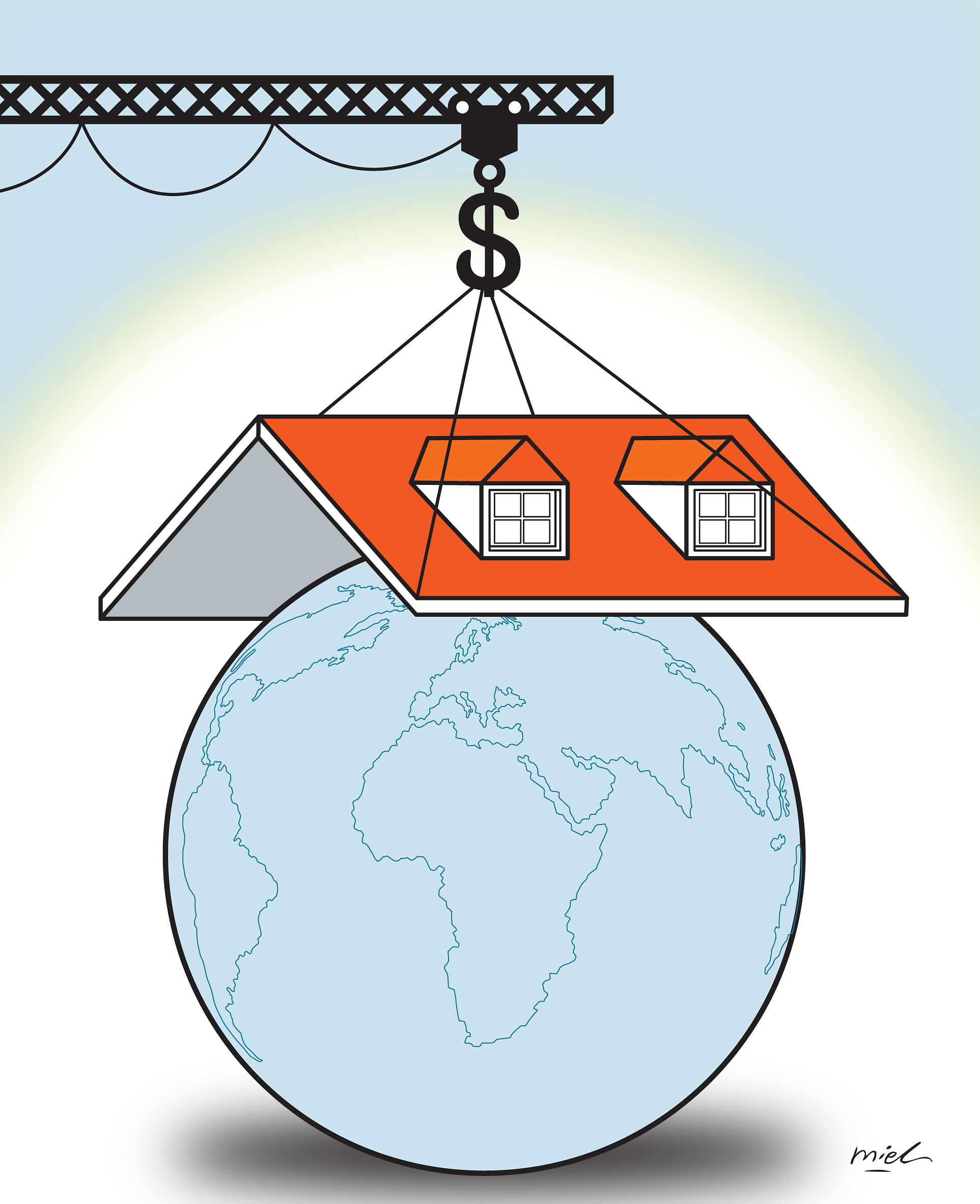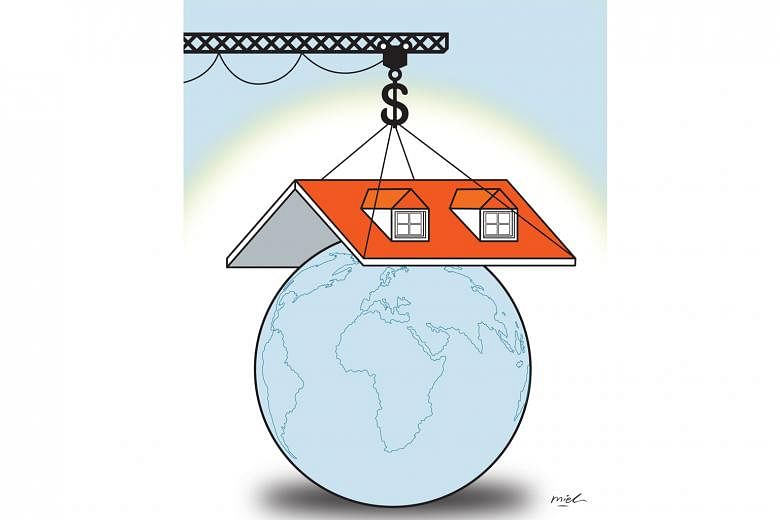Very few countries can claim the distinction of achieving so much as rapidly as Singapore has in transforming itself over 50 years from a Third World port city to a thriving modern world-class metropolis.
This success story is underpinned by a strong public-private partnership, combining pragmatic government policies and executional competence with the entrepreneurial and innovative skills of the private sector.
The real estate industry has played a key role in this transformational change and helped to create the enduring legacy of a highly liveable and sustainable environment ranked consistently among the best in the world.
In our book, Singapore's Real Estate: 50 Years Of Transformation, we trace the evolution of the Singapore real estate industry and identify the contributory factors to the successful partnership.
We develop two broad themes: the first being the change from the humble beginning of a locally focused development market, built mainly for owner occupation, to a globalised market.
The second is the increasing integration of bricks-and-mortar real estate with the capital markets as evidenced by the securitisation of both real estate equity and debt.
As a provider of infrastructure, policymaker, regulator, landowner and supplier of housing, the Government has created a powerful platform to set clear directions and a framework for the development of Singapore. This framework has enabled the Government to meet policy objectives, while allowing the private sector to satisfy its profit motive. For example, unambiguous land-use guidelines and development, building approval procedures and processes and long-range planning through the Concept Plan, reduce the uncertainties and associated risks in making investment decisions.

In the early years, in order to kick-start the urban renewal of the central business district (CBD), the Government used its legislative powers to compulsorily assemble land parcels which were then auctioned off to private developers.
Between 1967 and 1969, 46 parcels of land were released under its sale of sites programme for commercial development. Many of the CBD first-generation skyscrapers are the products of this partnership.
Another uniquely Singaporean phenomenon is that the Government is the largest housing developer, providing housing to more than 80 per cent of the population. Private developers play the complementary role of offering a range of private housing options.
LOCAL HOUSING TO GLOBAL INVESTMENT CHOICE
Within this synergistic public-private partnership, the real estate industry gradually grew in sophistication. Fifty years ago, real estate was a relatively simple and under-capitalised industry driven by entrepreneurs with little specialist knowledge. In the early years, developers with limited capital bought small land parcels to build mostly terraced and semi-detached houses. These were quickly sold in order to roll the capital over into larger projects.
From the 1960s to 1980s, the scale of cross-border real estate investments was relatively small. By the 1990s, we started to see a surge in cross-border flows of funds into real estate. Singapore has benefited from globalisation, both from the flows of foreign investment into local real estate and as an exporter of capital by home-grown institutions and developers to overseas markets.
Sovereign wealth fund GIC was a pioneer in cross-border real estate investment. The journey it has taken since its formation in 1981 reflects the changes in the global arena. It gradually diversified from investing in the United States to other geographies. Today, it has a truly globalised real estate portfolio with assets in more than 30 countries.
The small size of Singapore also adds pressure on local real estate firms to expand into external markets through exporting the traditional "bricks and mortar" business to the developing countries in Asia. By the 1990s, other home-grown companies, such as Singapore Land, Far East Organization, CapitaLand and its predecessors (DBS Land and Pidemco), Keppel Land, Ascendas, GuocoLand and CDL, were going overseas, targeting mostly emerging markets in Asia (including China, Hong Kong, India, South Korea) and South-east Asia.
Foreign developers and investors also began investing in Singapore in the 1990s. One of the most prominent development projects then was Suntec City, completed in 1997 by a Hong Kong consortium led by Cheung Kong Property Holdings. A slew of foreign developers from Australia, China, Hong Kong, Indonesia, Japan and Malaysia followed. Two recent large mixed-use developments in the new CBD are Asia Square and Marina Bay Financial Centre. They were funded by Australia-based Macquarie Global Property Advisors and a consortium comprising Hong Kong Land, Keppel Land and Cheung Kong Property Holdings, respectively.
BRICKS & MORTAR TO CAPITAL MARKETS
Innovations in the real estate industry and the capital markets over the past 20 years have enabled all parts of the underlying capital structure of real estate to become tradable both in the private and public markets. This transformational change has resulted in a vastly expanded range of real estate investment instruments and vehicles.
The use of innovative debt instruments, initially confined to the US, later spread to the more developed markets in Europe. Save for Australia and Japan, the real estate debt market remains under-developed in Asia. In Singapore, bonds backed by commercial mortgage were first introduced in the mid-1990s. However, Singapore's nascent development of a real estate debt investment market was virtually vanquished by the global financial crisis in 2008.
On the equity side, the breakthrough was the introduction of real estate investment trusts or Reits - the bundling of a portfolio of income-producing properties for listing on the stock exchange.
Developers now have another reliable vehicle to recycle capital, while small investors can invest through Reits to own a share of large commercial properties. The advent of Reits led to a surge in the securitisation of public real estate equity and private (or sometimes called unlisted) equity funds throughout the world.
Singapore entered the Reit market much later, in 2002, with the launch of CapitaLand Mall Trust, the first S-Reit. But the market has grown rapidly since - to around $70.35 billion as of May 2015, with 28 listed Reits and six stapled listed property trusts.
FUTURE TRENDS
The real estate industry has shown resilience, innovation and adaptability in transforming itself in the past 50 years. Hopefully it will be just as adept at meeting future challenges
There are five major trends that could have significant impact on Singapore's real estate market.
First, technological disruption is expected to affect the real estate market sooner than expected. Big data application, especially in the search process, could threaten and affect the real estate services industry, which includes agency, valuation and sales. These real estate intermediaries and service providers must re-strategise to survive. Other effects of technology can be seen in e-commerce as it changes traditional shopping habits, rendering some malls obsolete.
Second, green and sustainable built environment will receive more attention from the regulator, developers and also users.
Third, geographical diversification will see local developers taking more risks on opportunities offshore. Real estate markets could become more connected and globalised, especially in the logistics and commercial sectors.
Fourth, financial and capital markets will become more integrated with the physical real estate market. As Reits create a channel to securitise illiquid real estate assets and also create more efficient flows of capital across borders, this results in upward pressure on real estate prices.
Fifth, preparing the next generation of real estate professionals must take into account future challenges. Real estate education needs to provide greater global exposure to students and professionals.
There are indeed many challenges ahead. What has worked in the past 50 years may not work for the next 50 years. A new formula will need to be found to prepare for new challenges in the remaking of a "Future City".
•Seek Ngee Huat is chairman, Institute of Real Estate Studies (IRES), and practice professor at the Department of Real Estate, National University of Singapore. (DRE-NUS)
•Sing Tien Foo is IRES deputy director and dean's chair associate professor, DRE-NUS.
•Yu Shi Ming is an associate professor, and former head of department, DRE-NUS.
Correction note: This article has been amended to correct the names of Cheung Kong Property Holdings and Marina Bay Financial Centre.

